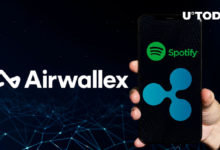Report: South African Startup Momint Seeks to Boost Electricity Generation Using Blockchain-Based Solution

Using a solution that is based on blockchain technology, the South African startup Momint has said the recently launched Suncash initiative aims to ease the country’s power generation challenges. For about $9, investors can reportedly buy non-fungible tokens (NFTs) linked to solar cells which are then leased to institutions such as schools and hospitals.
Momint Pilots Solution at One Local School
A South African startup, Momint, recently said it has launched a blockchain-powered solution that can ease the African country’s energy woes by installing more rooftop solar systems at public institutions like hospitals and schools. According to a News 24 report, the startup’s solution has already been piloted at Delmas High School in South Africa’s Mpumalanga province.
As explained in the report, investors that wish to participate in this project can do so by acquiring non-fungible tokens (NFTs) which are linked to solar cells and are sold for a minimum price of just under $9. The solar cells are then leased to institutions that agree to purchase the generated electricity via a so-called standard power purchase agreement.
Commenting on his company’s solution to South Africa’s power generation crisis, Ahren Posthumus, the CEO of Momint, said:
We are a technology company that’s trying to build for the next 15 years, but what we realised is we can’t build a technology company in a country that doesn’t have electricity.
Posthumus also claimed that his company does not expect to profit from the project which he described as “not financially sustainable.” The CEO claimed, however, that his organization chose to pursue this project because it wants to help South Africa overcome its power generation challenges.
Blockchain Solution Lowers Risks for Momint
On why the startup chose blockchain, Posthumus insisted that this not only makes the project transparent but it also lowers risks for Momint.
“We take legal contracts that represent ownership of each individual cell, and we put those legal contracts into a file that’s typically referred to as ‘the token’ on the blockchain. It’s called a smart contract. That smart contract says, ‘whoever owns this token has the right to the underlying asset’ and they have the right to the revenues that the underlying asset generates,” the CEO reportedly said.
While the blockchain-based solution is seen as one of the most appropriate ones, it nevertheless comes with its own drawbacks. According to Posthumus, one such drawback is the risk of public institutions defaulting.






 Bitcoin
Bitcoin  Ethereum
Ethereum  Tether
Tether  USDC
USDC  TRON
TRON  Dogecoin
Dogecoin  Cardano
Cardano  Bitcoin Cash
Bitcoin Cash  Chainlink
Chainlink  LEO Token
LEO Token  Stellar
Stellar  Monero
Monero  Zcash
Zcash  Litecoin
Litecoin  Hedera
Hedera  Dai
Dai  Cronos
Cronos  OKB
OKB  Tether Gold
Tether Gold  Ethereum Classic
Ethereum Classic  KuCoin
KuCoin  Gate
Gate  Algorand
Algorand  Cosmos Hub
Cosmos Hub  VeChain
VeChain  Dash
Dash  Tezos
Tezos  Stacks
Stacks  TrueUSD
TrueUSD  IOTA
IOTA  Basic Attention
Basic Attention  Theta Network
Theta Network  Decred
Decred  NEO
NEO  Qtum
Qtum  Synthetix
Synthetix  Ravencoin
Ravencoin  0x Protocol
0x Protocol  DigiByte
DigiByte  Zilliqa
Zilliqa  Nano
Nano  Siacoin
Siacoin  Numeraire
Numeraire  Waves
Waves  Ontology
Ontology  Enjin Coin
Enjin Coin  Status
Status  BUSD
BUSD  Hive
Hive  Pax Dollar
Pax Dollar  Lisk
Lisk  Steem
Steem  Huobi
Huobi  NEM
NEM  OMG Network
OMG Network  Bitcoin Gold
Bitcoin Gold  Augur
Augur  Ren
Ren